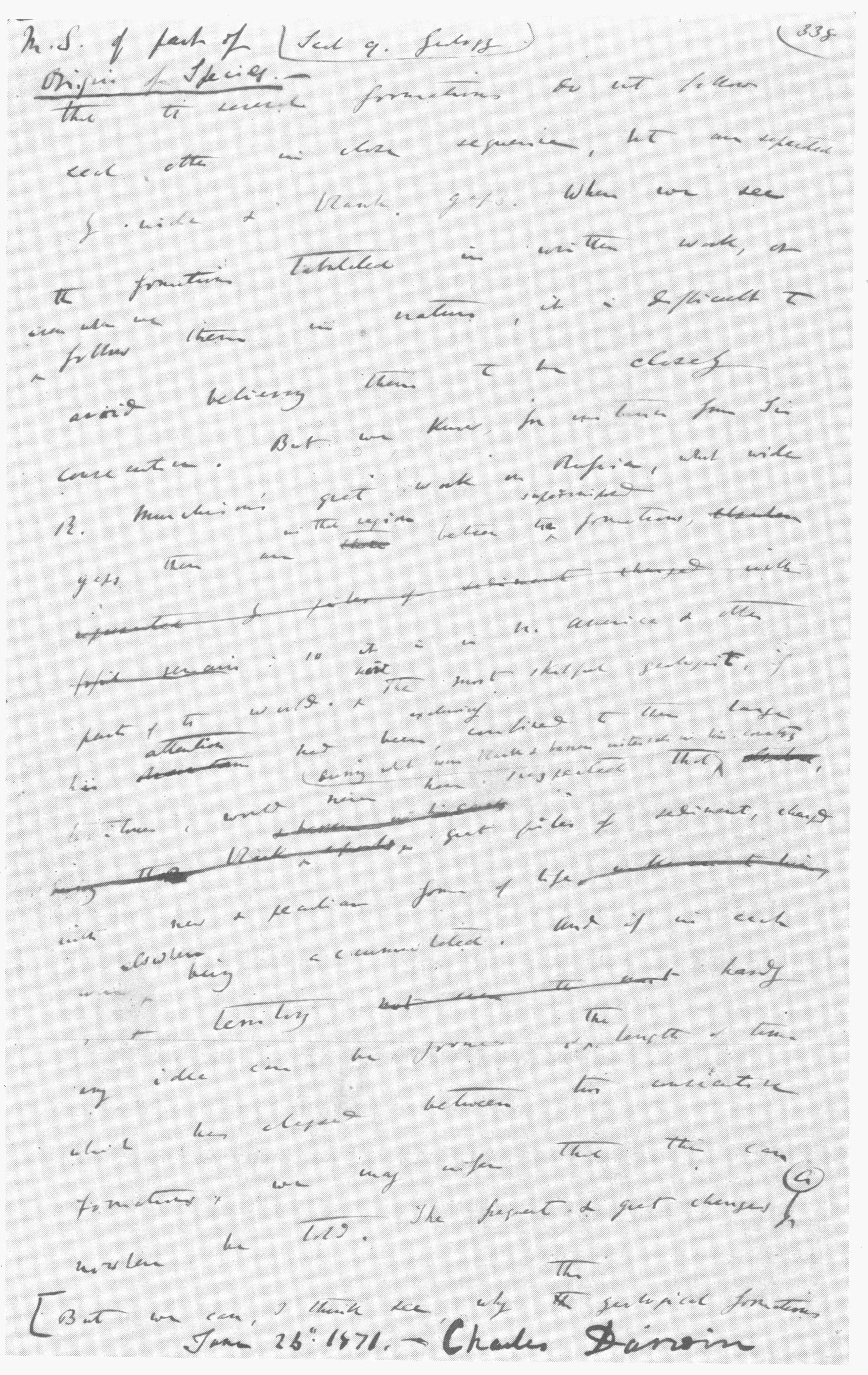[338]
[later insertion by Darwin:] M.S. of part of Origin of Species.—
(338
Sect 9. Geology
that the several formations do not follow each other in close sequence, but are separated by wide & blank gaps. When we see the formations tabulated in written work, or even when we follow them in nature, it is difficult to avoid believing them to be closely consecutive. But we know, for instance from Sir R. Murchison's great work on Russia, what wide gaps there are there in that region between the superimposed formations, [elevation] separated by piles of sediment charged with fossil remains: so it is in N. America & other parts of the world. Now the most skilful geologist if his [observation] attention had been exclusively confined to those large territories, would never have suspected that during what were black & barren intervals in this country [observed], during that black & barren [& barren in his country] epochs great piles of sediment charged with new & peculiar forms of life, unknown to him, was elsewhere being accumulated. And if in each separate territory not even the most hardly any idea can be formed of the length of time which has elapsed between two consecutive formations, we may infer that this can nowhere be told. The frequent & great changes (a)
(But we can, I think see why the the geological formations
[later insertion by Darwin:]
June 26th. 1871.— Charles Darwin
[338v]
[blank]
[page] 109

467
467 DARWIN, CHARLES. Autograph manuscript signed, one leaf from the manuscript of The Origin of Species, n.p., n.d. [c. 1859], titled at head and signed at base with date 26 June 1871, 1 page, folio, on pale blue foolscap paper, with a narrow envelope in which the leaf was sent to its original owner
The page, "338" at left upper corner, is headed, "Sect. 9. Geology" and bears 23 lines of text, with heavy corrections and revisions. Darwin has labelled the leaf, "M.S. of part of Origin of Species, " numbered and added the date alongside his bold signature at the bottom.
PROVENANCE
1. Erasmus Darwin, the naturalist's brother, who has written on the envelope "N.B. Not forged E.A.D." and addressed it to R. Tait. Tait himself has written, in the corner, "Autograph of Charles Darwin, part of the manuscript of Origin of Species. Sent to me in this envelope by his elder brother Erasmus, my friend and neighbor in Queen Anne St. here for many years ..."
2. Sotheby's. London, 24 June 1975, lot 300 ("Property of a Gentleman")
3. Maggs Bros. Ltd, London.
$2500.00 - USD 3500.00